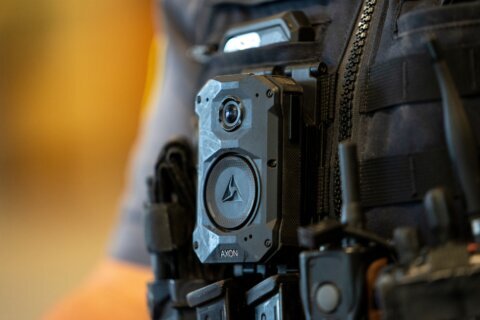After receiving a prostate cancer diagnosis and experiencing the many emotions that can come with it, deciding on a course of treatment can be overwhelming. It’s daunting to want to make the right choice specific to a very personal situation, and to cause the least harm and achieve the greatest benefit. It has been my experience, in medicine and life in general, that people tend to shy away from things they aren’t familiar with. Relative to the topic of prostate cancer treatment, sometimes robotic technology is seen as one of those unfamiliar things. So, it’s my job and highest responsibility — as a urologist who also specializes in robotic surgery — to break down the unnecessarily intimidating walls of robotic surgery and to provide patients who are strong candidates for it with all the information they need to feel comfortable and confident with robotic surgery as a viable option for prostate cancer treatment.
[See: 10 Questions to Ask Your Doctor About Prostate Cancer.]
First, it’s important to approach this conversation with the understanding that robotic surgery is performed in a wide variety of medical fields — from urological applications (including prostate, kidney and bladder surgery) to gynecologic; cardiac; and ear, nose and throat surgeries. In addition, robotic surgery is not an experimental treatment modality. It is Food and Drug Administration-approved, and both long- and short-term clinical studies have investigated its usage across these fields of medicine. Another important note of clarification is to understand that robotic surgery does not make the surgeon who is utilizing the technology obsolete. We don’t wind the robot up and go. In fact, the best robotic surgery results come from those surgeons who are highly-trained, incredibly skilled and heavily-experienced in the use of robotics for the performance of prostate cancer surgery. The research tells us that with increased skill, training and experience comes a decrease in the risk of surgical complications. In order to obtain the greatest possibility of curative prostate cancer treatment while also optimizing a patient’s quality of life, it’s crucial that any type of robotic surgery be performed by only highly-skilled surgeons at centers that support highly technical robotic programs.
Robotic surgery is the more accurate and precise way to surgically treat prostate cancer because of its superior effectiveness in tissue dissection. Due to the precision and accuracy of the robotic instruments used during the procedure, the surgeon is provided with an enhanced ability to navigate the pelvis and able to make very precise dissections around delicate nerves, without cutting into them. Preserving these nerves gives patients an excellent chance at maintaining both their sexual function (avoiding impotence) and bladder control (avoiding incontinence) — two aspects that directly affect quality of life post-surgery.
[See: Which Medical Screenings Should You Have in 2017?]
This treatment modality is also credited with minimizing the side effects of surgery. Compared to open surgery, laparoscopic robotic prostatectomy is a minimally invasive procedure (that involves tiny pencil like instruments working through small incisions in the skin) credited with delivering less trauma to the body, less blood loss (which makes this procedure great for anyone wishing to avoid blood transfusions) and a shorter recovery time. Hospital stays are typically reduced to just one or two days, and most patients are able to return to sports and leisure activities just two weeks after surgery.
As an added benefit, patients with preexisting health conditions are not automatically disqualified from undergoing robotic prostate cancer surgery. Those with a history of heart disease, morbid obesity and previous prostate surgeries and radiation may still be eligible, but the final decision will be made by the patient’s physician. The two major qualifications for the procedure are having prostate cancer that’s clinically confined to the prostate (meaning the cancer has not spread elsewhere in the body) and being healthy enough to have a life expectancy of at least five years if the cancer was completely removed and cured.
[See: How to Be a Good Patient Wingman.]
Breaking the robotic prostate cancer surgery procedure down into the simple facts makes it approachable and relatable for patients, and allows them (alongside their loved ones and trusted urologist) to make an informed decision for themselves and their quality of life. The application of robotics in many different aspects of medicine is one that physicians and researchers are increasingly optimistic about. As a growing field of study in many universities worldwide, its future applications will surely continue to expand and flourish, all while greatly improving the lives and futures of the patients we serve.
More from U.S. News
7 Reasons to Call Off a Surgery
10 Ways to Prepare for Surgery
11 Ways to Cope With Back Pain
Humanizing Robotic Surgery for Prostate Cancer Treatment originally appeared on usnews.com







